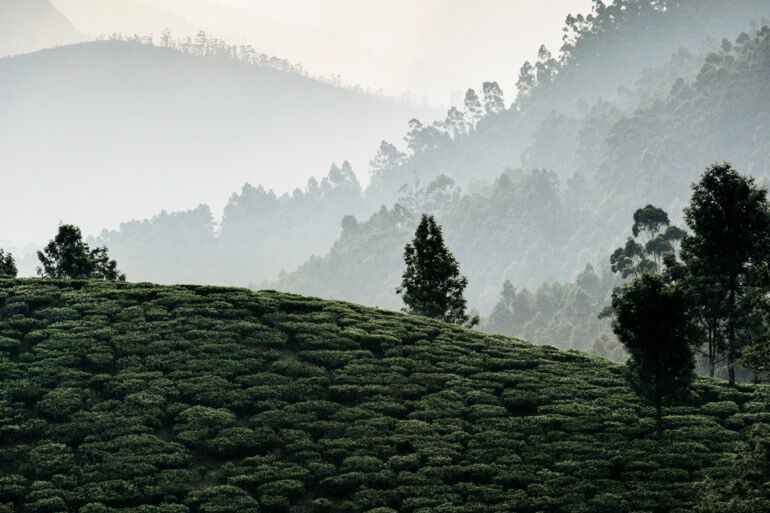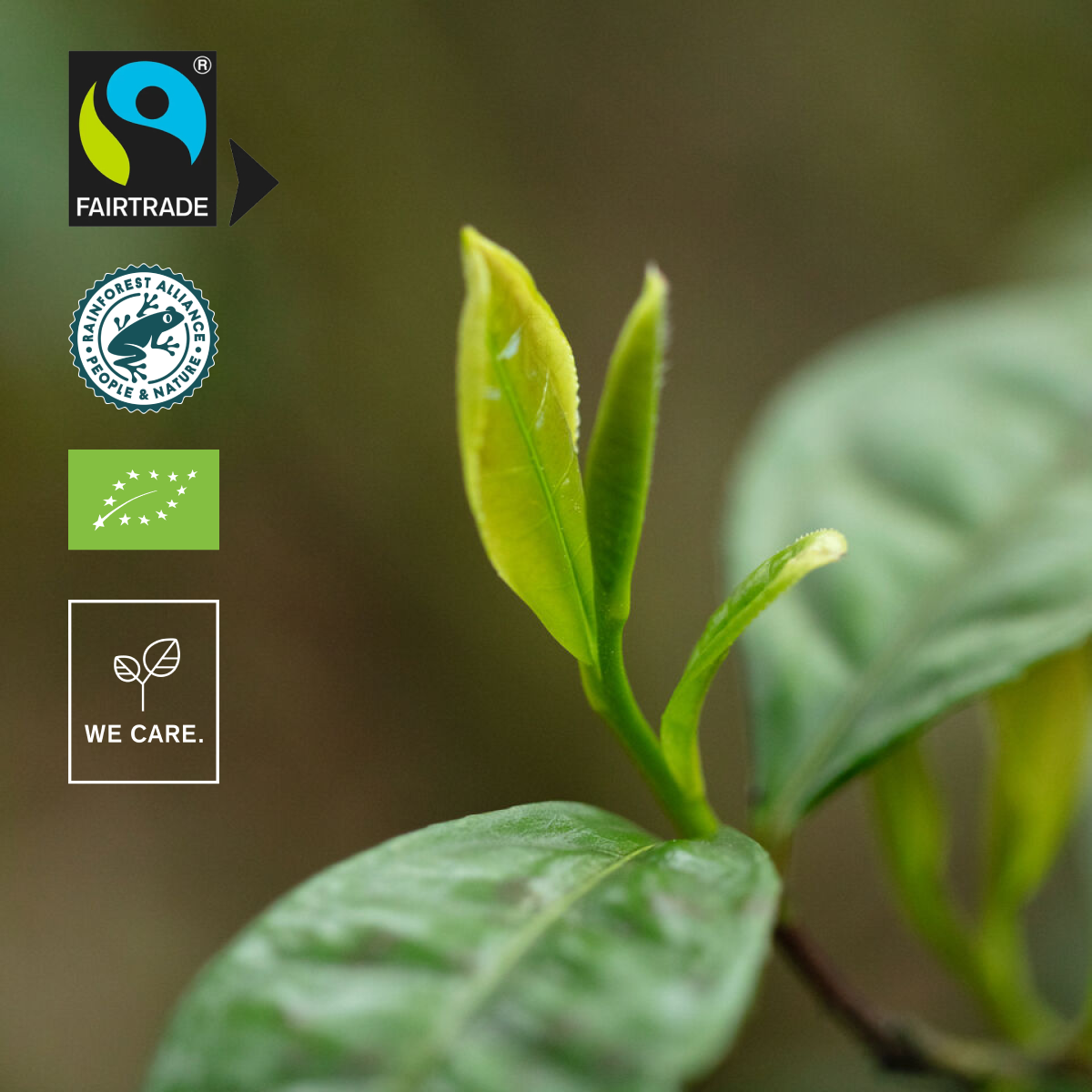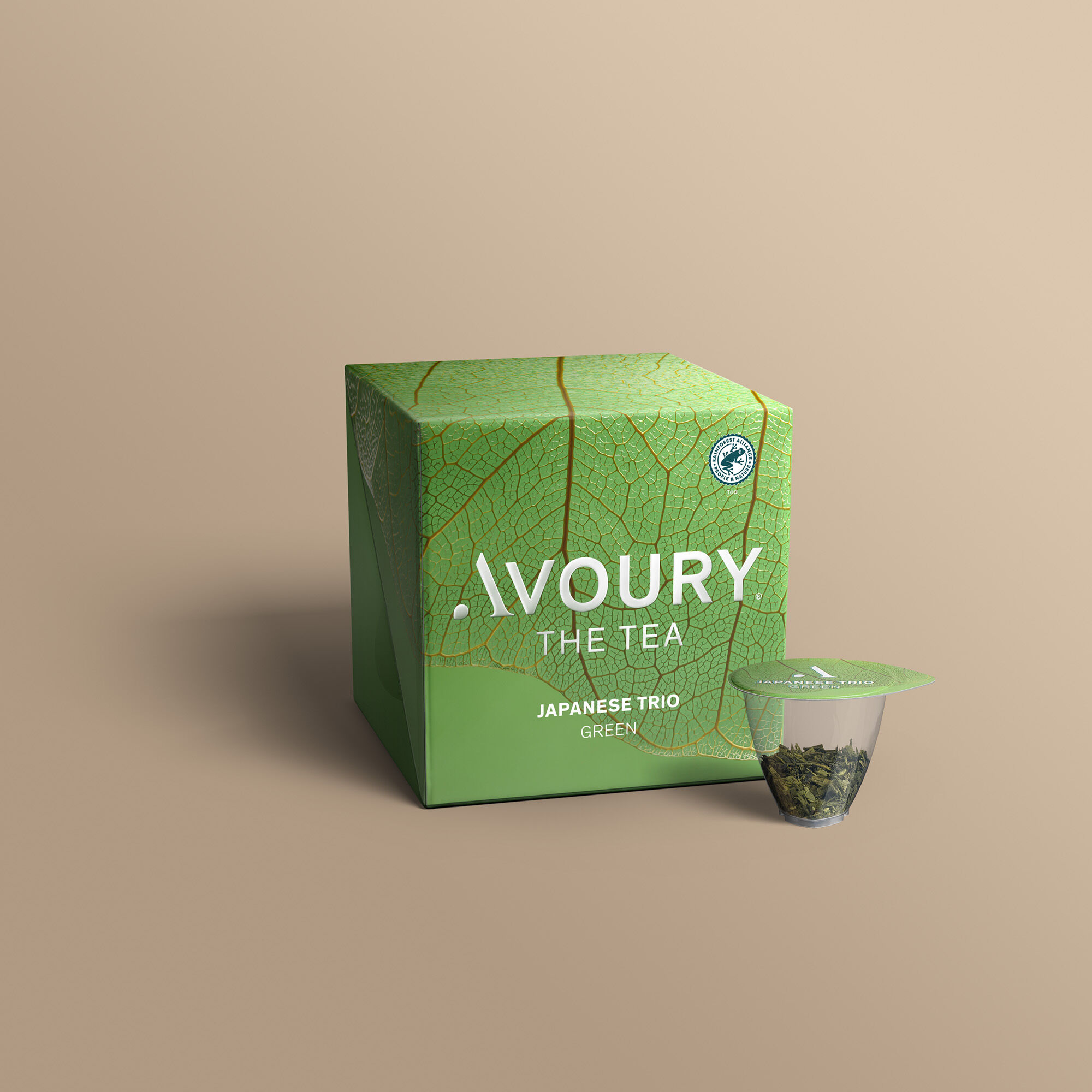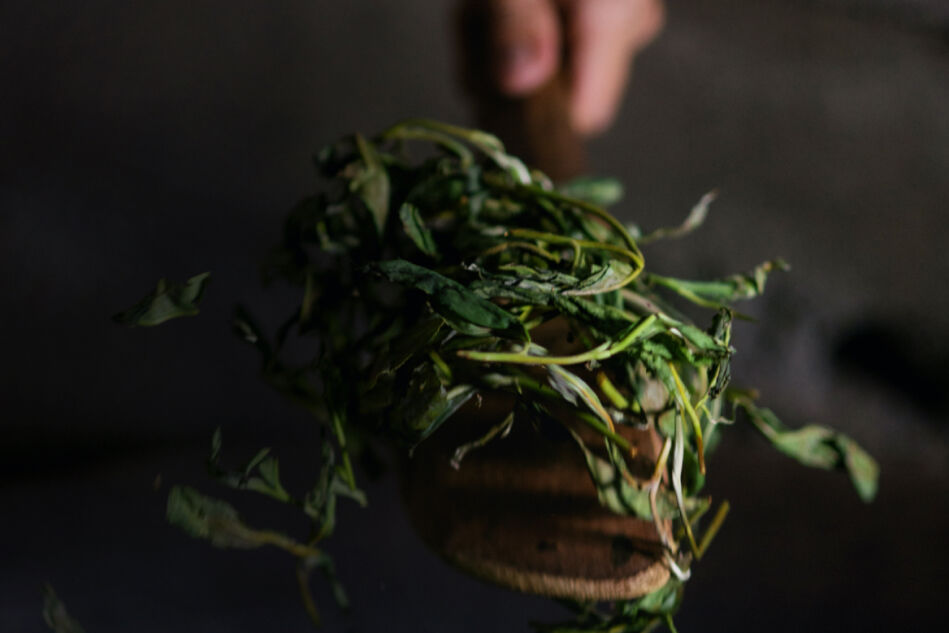Nothing changes if nothing changes.
The truth about tea cultivation.

After water, tea is the most widely consumed drink in the world, with around 15,000 cups drunk worldwide every second. But not all tea is the same. It can vary considerably, not just between different varieties but also in how and where it is grown. We take a behind-the-scenes look at tea cultivation.
Depending on where they are cultivated, tea plants grow at one altitude of between 600 and 2,700 metres. The rule of thumb is the higher the better, because tea benefits from the ideal humidity and precipitation conditions found at higher altitudes.
In the same tea-growing region – and sometimes even with the same plantation – differences in altitude, climate and soil composition produce a broad spectrum of teas with different qualities and aromas. But drinking tea is not just about enjoying the fine flavour of the end product, we need to spare a thought for the conditions under which the tea is produced and consider how this influence our society. There is a battery of seals and certificates telling tea lovers where their tea comes from, how it is grown and the trading conditions that lie behind it. We shine a light in the subject, explaining what you should look out for when buying your tea.
1# Organic tea cultivation
By its very nature, tea is one of the purest foodstuffs on this planet. Simply by adding tea leaves to water, you can make a refreshing drink with a complex array of flavours. With eco-friendly tea, the mantra is “less is more”: no synthetic pesticides or fertilizers are used and the plants are not genetically modified in any way. In organic tea cultivation, natural products such as beewax are used to protect the crop.
How do I know if my tea is organic? In the European Union, the EU organic logo was introduced in 2012. It consists of twelve white stars forming a leaf shape on a light-green background. Products bearing the label are produced by organic-certified businesses that are inspected at least once a year.


#2 Faitrade Label
When it comes to the production process and the entire supply chain, it’s not just about the properties of the product itself. We need to think about the conditions in which the people involved in the process live and work. Why does that matter? Worldwide, about 1.5 billion small farmers grow products such as tea, cacao and bananas, but most of them receive only a fraction of the sums these crops sell for. Thanks to Fairtrade-certified products, these farmers are not only fairly paid but also encouraged to come together to form communities that can stand up for themselves. This gives these producers not just financial stability, but also a greater sense of self-worth and more power, enabling them to speak as one and giving them a voice on the world market. In addition to a fair selling price, small farmers’ families and tea pickers are also paid a premium that can be used to support worthwhile community projects. What this money is spent on – such as schools or hospitals – is decided democratically by the community.
Of harmonic compositions.
The rainforest are home to 80% of the world’s plant and animal species. What’s more, forest absorb vast quantities of the greenhouse gas carbon dioxide, locking away the carbon in the plants and the soil they grow in. Our planet’s “green lung” thereby plays a crucial role in combatting global climate change. But this role is under threat. To make room for large-scale crop plantations, to date nearly a quarter of the world’s rainforests have been cut down. The consequences for our climate are already becoming apparent and present the tea industry with challenges too. Droughts, flooding and extreme weather events are leading to crop failures. To hold back this disastrous tide, the international organization, the Rainforest Alliance, is promoting more sustainable farming practices by training producers to use more climate-friendly cultivation methods. The organization has also set out a series of social, economic and ecological standards including standards to protect biodiversity and human rights, for example. Companies that meet them are entitled to label their products with the Rainforest Alliance Certified seal. So you can be confident that buying foodstuff which bear this logo is ultimately protecting the rainforests.

Nothing changes if nothing
changes.
Seals and certificates alone are never going to solve the complex problems facing some of the regions where these products are grown, but taken together they make an important contribution to bringing about positive social, commercial and ecological change. In short, they help make the world a better place.
More articles
More articles

Not less, but better.
Sharpening one's own awareness. Recognizing what one really needs. Giving things new appreciation. That's what minimalism is about. Following the motto 'less is more', more and more people are embracing the desire for clarity and order – even in the design of their homes.

Should we always follow our nose?
23,000 times – that´s how many breaths we take on average per day. And that means a multitude off different scents float in through our nose evoking a wide variety of reactions in us. In this article we´ll explain the psychological reasons behind this and why we should let our noses discover new things more often.
